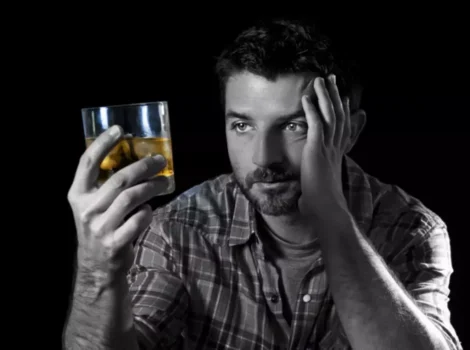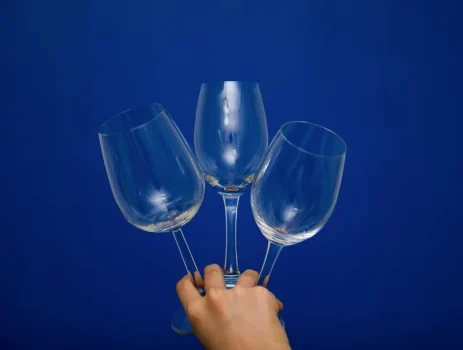
Short-term exposure to intoxicating concentrations of alcohol appears to inhibit both NMDA and non-NMDA receptor activity, potentially resulting in sedation (Valenzuela and Harris 1997). As in the case of GABAA receptors, however, these excitatory receptors are relatively insensitive to intoxicating concentrations of alcohol under some experimental conditions (Wright et al. 1996), underscoring the need for more research in this area. Scientists have long sought the mechanisms by which alcohol acts on the brain to modify behavior. An important finding is the demonstration that alcohol can affect the function of specific neurotransmitters1 (Lovinger et al. 1989). Studies of neurotransmitters and the receptors to which they bind have provided data on both the structure and the mechanism of action of these molecules as well as clues to their role in behavior. However, the function of individual neurotransmitters and their receptors cannot entirely explain a syndrome as complex as alcoholism.
AB behavior following dopamine depletion
Furthermore, rats undergoing intermittent access to 20% alcohol in 2 bottle choice paradigm exhibit distinct profiles of intake ranging from low alcohol consumers to rats that exhibit slow or rapid escalation of excessive drinking [125]. A major theme of recent alcohol research has been to leverage animal models and circuit-analysis approaches to link neural circuit activity with specific aspects of AUD [95]. For example, in mice, chronic alcohol exposure decreased the excitability of OFC outputs to the DMS [96], and alcohol-induced synaptic plasticity in the OFC has been linked to excessive alcohol use in both mice and monkeys models [97,98].

Gene expression analyses
Preclinical as well as clinical studies have shown that substances indirectly targeting the mesolimbic dopamine system may be potential targets for attenuation of alcohol reward. Posttranslational modifications such as phosphorylation are core molecular signaling events. For instance, the protein tyrosine kinase (PTK) Fyn, through the phosphorylation of GluN2B in the dorsomedial striatum (DMS) of rodents, contributes to molecular and cellular neuroadaptations that drive goal-directed alcohol consumption [51,52]. Interestingly, Fyn also plays a role in heroin use [53], suggesting a more generalized role of the kinase in addiction.
1. Thiamine Deficiency
The 9 base pair repeat is extremely rare and in statistical studies, often clubbed with the 10 base pair repeat. Slowly over a period of time, the person craves more of the drug, to achieve the same kind of high as earlier. He thus starts consuming more and more alcohol until a point comes when normal brain chemistry simply cannot function without alcohol.

Furthermore, the specific neuronal circuitries were progressively mapped with major projections from the ventral tegmental area (VTA) to the nucleus accumbens (NAc, i.e. the ventral striatum), the prefrontal cortex (PFC) and amygdala. Collectively, this network of neurons was denominated the mesocorticolimbic dopamine does alcohol produce dopamine system [12, 13]. In addition, there are dopamine projections from the VTA to the amygdala and the hippocampus, respectively, involved in reward associative learning and declarative memory formation [15, 17]. Current research strongly suggests that alcohol affects multiple neurotransmitter systems in the brain.
- People at high risk showed a greater dopamine response in a brain pathway that increases the desire for rewards according to the lead author of the study Professor Marco Leyton, of McGill University’s Department of Psychiatry.
- Additionally, Fmrp in the hippocampus plays a role in the acute antidepressant actions of alcohol [49].
- People with low levels of dopamine may be more prone to addiction; a person seeking pleasure via drugs or alcohol or food needs higher and higher levels of dopamine.
- These examples demonstrate that serotonin interacts with other neurotransmitters in several ways to promote alcohol’s intoxicating and rewarding effects.
In abstinent alcohol dependent individuals a greater MOR availability in the ventral striatum, as measured by [11C]Carfentanil, compared with healthy controls was correlated with a greater craving for alcohol [142]. Increased MOR binding could be due to higher receptor levels or reduced release of endogenous endorphins. It was later postulated that greater [11C]Carfentanil binding could be related to reduced β-endorphins in alcoholism. Post-mortem studies have noted a 23–51% reduction in MOR binding [143] in alcohol dependent individuals when compared with controls.
- Accordingly, the macaques in Cohort 3 underwent three, 1-month long abstinent periods during the experiment.
- Scientists have suggested that knowledge about the role of the neurotransmitter dopamine in the brain’s reward system may help fight the climate crisis.
- Similarly, alcoholics taking fluoxetine drank less frequently and reduced their alcohol consumption during drinking sessions (LeMarquand et al. 1994a; Litten et al. 1996; Naranjo and Bremner 1994; Pettinati 1996).
- Alcohol exposure alters several aspects of serotonergic signal transmission in the brain.
The fact that there is also less dopamine in the prefrontal cortex, governing these executive functions, is of significance as it could impair the alcohol‐dependent individual’s capacity to utilize behavioural treatment strategies, which are critical to relapse prevention. As mentioned above, it has been hypothesized that the chronic intake of alcohol induces a dopamine deficit state in the brain reward system and that this dysfunction may drive craving and relapse to drinking [101, 18, 19]. In outbred rodents, however, the effects on the mesolimbic dopamine system following chronic alcohol treatment are inconsistent [102]. One possible explanation for these discrepancies may be that most preclinical studies to‐date have used forced alcohol administration which introduces an element of stress and artefact into the experiment, casting doubt on the applicability to our understanding of human alcohol dependence.
Presynaptic regulation of dopamine release by dopamine and acetylcholine

